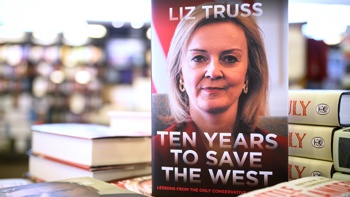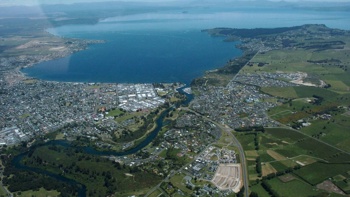TVNZ has plunged into the red, reporting a $25.8 million net loss for its year to June 30 - against its year-ago profit of $2.9m and its first loss since 2010.
But even before the pandemic hit, or the first lick of flames had crept along the roof of the neighbouring International Convention Centre, forcing an extended relocation, Kenrick had been predicting a tough time of it for the state broadcaster's 2020 financial year.
Around this time last year, the chief executive predicted a $17.1m loss for FY2020 as his company restructure for more online content, and more local content, in the face of rising competition from the likes of Netflix, Disney+ and Amazon Prime.
Kenrick pushed ahead for that plan, and he says it accounts for a lot of the red ink.
Operating revenue was stable year-on-year at $310.8m due to advertising revenue
growth pre Covid-19 and $5.9m government relief partially offsetting revenue declines
incurred from April 2020.
Advertising revenue was down $7m for the year to $286.3m.
Kenrick says TVNZ recovered quickly from -34% revenue declines in April to -16% in June. Digital advertising revenue grew 19% year-on-year.
Operating expenditure increased by $34.5m year-on-year to $320.6m - primarily because of the local content production increase and $30m in one-off charges - including $22.6m for "onerous contract impairment" (which Kenrick says is essentially a write-down of the value of content rights brought pre-Covid, which could now bring in less revenue); a $3.9m change to amortisation of content; and $3.6m redundancy costs.
Kenrick said it had been a "booming" first nine months of TVNZ's financial year with ad sales up 5 per cent but a "bruising" final three months with ad sales down 25 per cent.
But although brusing, things did pick up faster than expected over the quarter. Ad sales were down April 33 per cent, May 27 per cent, and June 16 per cent, Kenrick said.
The CEO said TVNZ was in a strong position in terms of cash-on-hand.
The state broadcaster has an existing undrawn bank facility of $20m; and an "uncalled share subscription facility of $30m" - a mechanism to get a $30m leg-up from the Crown.
Including cash in the bank, that meant TVNZ had access to $100m in capital, Kenrick said.
Kernick offered no forecast for the year ahead, saying with pandemic uncertainty "the only certainty would be that I'd be wrong."
He said early indications were that the current lockdown was not as bad as the first - partly because it was regional, and partly because advertisers had got more savvy at online sales since the first lockdown.
/cloudfront-ap-southeast-2.images.arcpublishing.com/nzme/JTYPZGP66REDRKUVUUDRLZ7H6U.jpg)
By June, there was talk of 100 jobs going in a belt-tightening effort to save $10m. The Herald had already been tipped-off that OneNews would be going solo-presenter - a development confirmed the following month as TVNZ said Simon Dallow would present alone from August 14 (although the move back to lockdown saw a temporary reprieve for Wendy Petrie).
On that OneNews cull
This afternoon, Kenrick said OneNews was up for a restructure because it had two presenters. Other news shows, like Midday and Te Karere were solo-presenter already.
And while Breakfast is multi-presenter, Kenrick said "Breakfast is more of a personality-led, it's a three-hour conversation and it's hard to have a conversation with yourself."
RNZ merger recedes into distance
In one area, the threat of disruption seems to have receded, at least in the immediate sense.
This time last year, Broadcasting Minister Kris Faafoi was mooting the merger of TVNZ and RNZ.
But in January, the government shelved legislation that would have established TVNZ and RNZ in favour of a single supersize public broadcaster. And in February it commissioned PwC to assess the business case for such a move - and the more back-burner timetable of an outcome that could be implemented in 2023.
And with the government having already agreed to Kenrick's pre-Pandemic plan to suspend dividends to the Crown for three years, there was more relief on April 23 as Faafoi announced a $50m media support package aimed in large part at broadcasters TVNZ, RNZ and MediaWorks with its key measures - $21.1m to completely cut transmission fees for six months, and $16.5m to cut by 80 per cent their contributions for NZ On Air screen content in 2020/21.
Rival MediaWorks earlier reported a $25.1m loss. Its television operation is up for sale, with US company Discovery reportedly having the inside-running.










